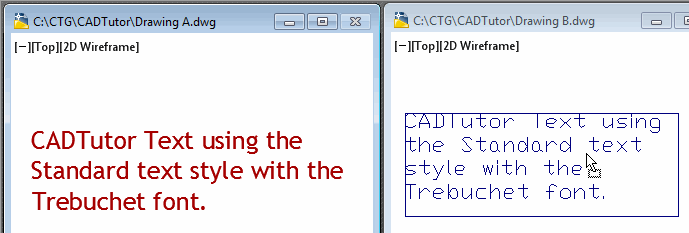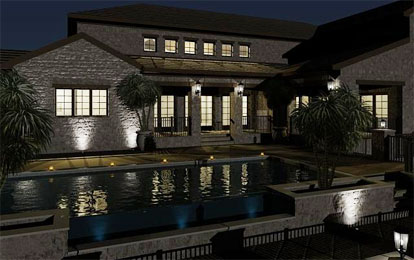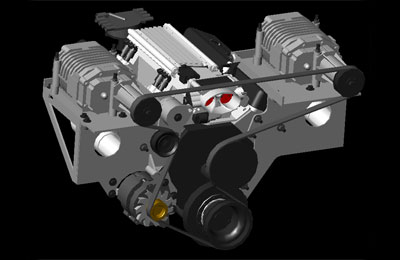Learn AutoCAD with our Free Tutorials
Welcome to CADTutor
CADTutor provides the best free tutorials and articles for AutoCAD, 3ds Max and associated applications along with a friendly community forum. If you need to learn AutoCAD, or you want to be more productive, you're in the right place. See our tip of the day to start learning right now!
Free Tutorials and More…
The Tutorials section provides over 100 original tutorials for AutoCAD, 3ds Max and other design applications. Michael’s Corner is an archive of productivity articles that brings you the best AutoCAD tips and tricks. Our Forum is a lively community where AutoCAD users can ask questions and get answers. The Downloads area provides free AutoCAD blocks, free AutoLISP routines and free images.
Tutorials of the Moment
Recently viewed tutorials
-
Converting Audio CD tracks to MP3 Files

This tutorial explains how to rip CD tracks to MP3 files, ready for playing within a PowerPoint slide show. Format: Text/Image
Last visited: less than one minute ago
-
Selection Methods

Keeping track of and selecting objects in a scene is a crucial part of 3D modelling. Develop a good strategy for naming, selecting, grouping and displaying objects before embarking on a project. This tutorial shows you the way. Format: Text/Image
Last visited: less than one minute ago
-
Drawing Objects

Getting to grips with AutoCAD's basic drawing tools. This is an ideal start for the AutoCAD beginner. Format: Text/Image
Last visited: less than one minute ago
-
Exterior Lighting

This tutorial shows you how to set up a standard Sunlight System using a target direct light and including ambient light and standard shadow map settings. Format: Text/Image
Last visited: less than one minute ago
-
Drawing Aids

All about drawing aids. Format: Text/Image
Last visited: 1 minute ago
-
Direct Distance Entry

The essential way of working with AutoCAD Format: Text/Image
Last visited: 1 minute ago
CADTutor Tutorials
Our tutorials are comprehensive but straightforward introductions to AutoCAD and related software. They are designed to help beginners get to grips with design workflows as quickly as possible. There are over 100 to choose from, some text/image based and others in video format. Whatever stage you are at in your learning, you should find a tutorial to help.
Forum Latest
Currently Active Topics
Best Practices for Setting Up a Podcast Studio
by oddssatisfy
1 reply
Last post: 2 hours ago
Export mtext to Excel
by BIGAL
2 replies
Last post: 10 hours ago
vlax-curve-getClosestPointToProjection returns inconsistent results
by IToastThereforeIAm
2 replies
Last post: 15 hours ago
Automating Room Quantities? I built a Lisp for that (Free v1.0)
by kevren
0 replies
Last post: 25 hours ago
Pathfinding in AutoCAD with the A-Star Algorithm (A*)
by heschr
6 replies
Last post: 45 hours ago
Curb offset
by Alexia
9 replies
Last post: 63 hours ago
This Week's Hot Topics
Align the extension lines to the short line of each selected size
by Nikon
8 replies
Viewed: 415 times
Cross Section area and Its calculation
by ..very.
4 replies
Viewed: 420 times
REACTOR Exposure Request
by ScottMC
4 replies
Viewed: 392 times
drawing problem ,
by riah
3 replies
Viewed: 276 times
Trying to adjust point marker location
by CyberAngel
2 replies
Viewed: 246 times
vlax-curve-getClosestPointToProjection returns inconsistent results
by IToastThereforeIAm
2 replies
Viewed: 196 times
CADTutor Forums
Our forum is a vibrant community of experts and beginners. The main focus is helping beginners get to grips with AutoCAD and to help more advanced users become more productive. The AutoLISP forum is one of the busiest out there, providing expert advice for busy professionals.
AutoCAD Productivity
Avoid Using ‘Standard’ in Text & Dimension Styles
From: AutoCAD Productivity Articles #141
Originally published: August 2015
In addition to Layer 0, every single drawing on the planet has a Text style called ‘Standard’, and a Dimension style called ‘Standard’. They're the defaults.
When developing company standards, it's best to not modify the Standard styles; leave 'em alone and make your own.
And here's why. Let's say you have text you added to Drawing A (using your modified ‘Standard’ text style to use the Trebuchet font), and you drag that text into Drawing B where the Standard text style uses the TXT.SHX font.
Since Drawing B already has a ‘Standard’ text style—see opening sentence, above—who do you think will "win" when it comes to how the text looks? The text in Drawing B will use the font which is already assigned to the Standard text style.

In the illustration, you see the result when I drag the text from Drawing A into Drawing B. Questions?
See all the articles published in August 2015
Michael's Corner
Between 2003 and 2016, Michael Beall (and one or two guests) wrote almost 600 articles for CADTutor. The focus of these articles is AutoCAD productivity, and although some of them are now more than a few years old, most remain relevant to current versions of AutoCAD. The article above is just one example. Check out Michael's Corner for a full listing.
Image of the Week
-
17th – 23rd November 2025

This week's image is by Titi95
Software used: AutoCAD 2015 and Keyshot
-
Last Week's Image

Last week's image is by Red333
Software used: AutoCAD Architecture 2009
-
Two Weeks Ago

This image is by Pocket
Software used: AutoCAD 2002
-
Three Weeks Ago

This image is by Titi95
Software used: AutoCAD 2015 and Keyshot
Gallery of Work
Over the years, our forum members have contributed hundreds of images, showcasing their amazing work. The images above are just a small selection that demonstrate the wide range of project types our community is involved with. Take a look at our gallery to see all the images published in the last 12 months.
Tip of the Day
Object Snap Cycling
 When drawings get crowded with lots of detail, it can be difficult to select the required snap point with running object snaps. Invariably, the snap point AutoCAD finds is not the one you want. This is where object snap cycling comes to the rescue. With running object snap turned on, hover the cursor close to the snap point you want and hit the Tab key on the keyboard to move between the various possible snap points near the cursor. Keep hitting the Tab key until you find the snap point you want. When you've got it, left-click to select the point.
When drawings get crowded with lots of detail, it can be difficult to select the required snap point with running object snaps. Invariably, the snap point AutoCAD finds is not the one you want. This is where object snap cycling comes to the rescue. With running object snap turned on, hover the cursor close to the snap point you want and hit the Tab key on the keyboard to move between the various possible snap points near the cursor. Keep hitting the Tab key until you find the snap point you want. When you've got it, left-click to select the point.
Missed a Tip?
Did you miss yesterday's tip? Maybe you forgot to drop by or maybe you don't visit over the weekend. If so, you can now see all the tips published during the past week. Also, if you have a tip you'd like to share with us, you can post it on our forum and if we like it, we'll publish it here.